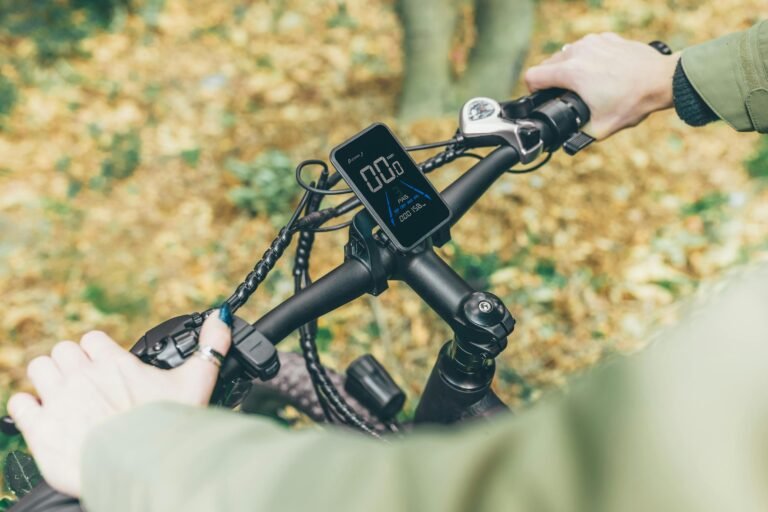What’s the Best Online Bike Fit Calculator?
A bike fit calculator can transform your cycling experience, improving performance, comfort, and—most importantly—reducing the risk of injuries. But with so many bike fit calculators available online, it can be tough to choose the right one. This article dives into four of the best bike fit calculators: Velogicfit, Zinn Cycles, Competitive Cyclist, and Jenson USA. I’ll compare their features, benefits, and usability, helping you pick the tool that matches your needs for cycling injury prevention and optimal riding comfort.
Why You Need a Bike Fit Calculator
If you’ve ever felt knee pain, back stiffness, or tingling in your hands after a ride, chances are your bike isn’t set up quite right. A correct bike fitting is the secret sauce for better performance—but here’s the thing, not everyone can afford a professional fitting. That’s where a bike fit calculator comes in. These online tools are game changing for cyclists at all levels.
Preventing Injuries with Proper Bike Fit
The biggest reason to get your fit right is to avoid injuries. When your bike isn’t adjusted to your body, every pedal stroke puts extra strain on muscles and joints. Over time, that can lead to classic overuse injuries, like knee pain from a saddle that’s too high or low, or back pain from handlebars that are positioned incorrectly.
With a bike fit calculator, you input basic measurements like inseam length, torso height, and arm reach, and the tool spits out adjustments tailored to your anatomy. It might seem overly simple, but those numbers make all the difference in spreading your weight evenly and reducing strain.
Common Discomforts from a Bad Setup
An improper bike setup doesn’t just cause injuries; it can make every ride a pain—literally. Hand numbness happens when you lean too far forward, compressing nerves, and back pain often stems from poor posture caused by the wrong reach or handlebar height.
Using a bike fit calculator can help you find the right saddle width for your sit bones, and the difference can be night and day.
Why Use a Bike Fit Calculator?
Online bike fit tools have come a long way. Unlike traditional trial-and-error methods (or guessing based on feel), these calculators give you measurements based on real-world ergonomics. They’re super convenient, too—you can find your ideal fit without leaving home. Many tools even offer suggestions for adjusting cleats, handlebars, and saddle tilt.
Of course, a calculator isn’t a substitute for a pro fit if you’re experiencing serious discomfort or training for high-level events, but for most of us, it’s a cost-effective, reliable way to ride more comfortably. And honestly, why not eliminate avoidable aches with a few clicks?
A properly fitted bike isn’t just about comfort; it’s about riding farther, faster, and pain-free. If you haven’t tried a bike fit calculator yet, you owe it to yourself—and your knees, back, and hands!

What to Look for in a Bike Fit Calculator
Not all bike fit calculators are created equal, and picking the right one can make the difference between rides that feel amazing and rides you can’t wait to end. With so many options out there, how do you decide? Here’s a guide to the features that matter most when choosing a bike fit calculator.
Accuracy: The Heart of the Matter
Accuracy is everything. If a calculator doesn’t provide reliable recommendations, it’s not worth your time—period. Look for tools that base their suggestions on proven formulas, like those using measurements of your inseam, torso, and arm length to calculate saddle height or handlebar reach. I’ve used some that felt more like guesswork, and trust me, you don’t want to waste hours making adjustments only to find the fit is still off. Reviews and user feedback can clue you in on whether a tool delivers accurate results.
Customization: Tailored to Your Needs
Cyclists are a diverse bunch, and your calculator should reflect that. The best tools allow for customization based on your specific type of bike (road, mountain, hybrid, or gravel) and riding style—whether you’re cruising casually or training for a race. For example, a mountain bike fit will focus more on stability and control, while a road bike fit emphasizes efficiency and speed. A one-size-fits-all approach rarely works when it comes to bike fitting.
Ease of Use: No Headaches, Please
Let’s be real—no one wants to spend hours trying to figure out a clunky interface. Look for calculators with intuitive layouts and clear instructions. Tools with video tutorials or visual aids to guide you through taking measurements are especially helpful. Simplicity is key.
Additional Features: Going the Extra Mile
Some bike fit calculators offer more than just measurements, and these extras can be really helpful. Features like 3D modeling to visualize your adjustments, expert consultations, or even links to resources about bike maintenance or injury prevention add serious value. If you’re a tech lover, look for tools that integrate with fitness apps or smart trainers for even deeper insights into your riding posture.
Pricing: Free vs. Paid Tools
There’s a range of options, from free calculators to paid services. Free tools can be surprisingly effective, especially if you’re new to fitting, but premium options often include perks like personalized reports or one-on-one support.
Consider how much riding you do and whether it’s worth splurging. If you’re clocking regular miles or training for big events, the cost might just pay for itself in comfort and performance.
Finding the right bike fit calculator doesn’t have to be complicated. Focus on accuracy, customization, and user-friendliness, and you’ll be on your way to better rides in no time.
Comparing the Best Bike Fit Calculators in 2024
Finding the perfect bike fit can feel like searching for a needle in a haystack. Thankfully, 2025 offers a range of excellent bike fit calculators tailored to different needs and experience levels. Here’s a comparison of four top tools, so you can decide which one works best for your riding style, goals, and budget.
1. Velogicfit Online Bike Fitting
Features:
Velogicfit takes a high-tech approach with advanced motion tracking to analyze your position on the bike. It offers tailored setups for various bike types, from road bikes to triathlon and mountain bikes.
Pros:
- Highly accurate recommendations, making it ideal for professional cyclists and serious competitors.
- Comes with video tutorials and customer support for a smoother experience.
Cons:
- Requires detailed body measurements, which might feel overwhelming for beginners.
- There’s a bit of a learning curve if you’re not familiar with bike fitting terminology.
Cost: $15 per fit session.
This is an excellent choice for riders who want professional-grade adjustments but don’t mind investing a little time and money.
2. Zinn Cycles Bike Fit Guide
Features:
Zinn Cycles takes a more DIY-friendly approach with step-by-step guides designed for cyclists to adjust their bikes themselves. It provides tailored recommendations for various bike types.
Pros:
- Highly affordable and empowers you to take control of your bike fit.
- Straightforward, text-based process with helpful illustrative guides.
Cons:
- No interactive tools or motion tracking features.
- Best suited for riders with a bit of technical know-how.
Cost: Free, with optional premium content.
If you enjoy learning the nitty-gritty of bike fitting, Zinn Cycles is a great, budget-friendly option.
3. Competitive Cyclist Fit Calculator
Features:
This beginner-friendly calculator focuses on basic adjustments like saddle height, handlebar reach, and stem length, all displayed in easy-to-read diagrams.
Pros:
- Completely free and super simple to use.
- Requires minimal input, making it great for first-timers.
Cons:
- Limited in scope, lacking advanced options for professional riders.
- Relies on manual measurements, which might lead to slight inaccuracies.
Cost: Free.
Perfect for riders just starting their journey or looking for a quick and easy fit.
4. Jenson USA Fit Calculator
Features:
Jenson USA helps you find the right bike frame size and offers calculators based on rider geometry. Customer service is available for follow-up questions.
Pros:
- A fantastic tool for beginners purchasing a new bike.
- Tailored specifically for frame sizing, ensuring you start with the right bike.
Cons:
- Limited to frame sizing; it doesn’t cover ongoing fit adjustments.
- Focused more on helping during the purchasing process than tweaking your current setup.
Cost: Free with bike purchases or inquiries.
This is a solid choice if you’re shopping for a new bike and need guidance on sizing
Each of these tools has its strengths, so choosing the best one depends on your goals and experience level. From the tech-savvy Velogicfit to the no-cost simplicity of Competitive Cyclist, there’s something for every cyclist out there.
Making the Right Choice for Your Needs
Choosing the right bike fit calculator depends on your experience level, goals, and how much time and effort you’re willing to invest in the process. Each tool shines in specific scenarios, so let’s break it down to help you decide.
Velogicfit: Precision for Professionals
If you’re serious about cycling—whether you race, train intensely, or ride long distances—Velogicfit is your go-to option. Its advanced motion tracking delivers precise recommendations, helping fine-tune every aspect of your setup. This tool is perfect for competitive cyclists who need everything dialed in to optimize power output and minimize risk of injury. While it’s a bit pricier ($15 per session) and requires detailed measurements, it’s an investment that pays off in performance.
Best for: Professionals and dedicated enthusiasts seeking pinpoint accuracy.
Zinn Cycles: DIY Adjustments Made Simple
Love getting hands-on with your bike? Zinn Cycles is a solid choice for cyclists who want to learn the art of fitting and make adjustments themselves. It provides detailed step-by-step guides tailored to different bike types, making it ideal for confident DIYers. While it doesn’t offer interactive features, its affordability (it’s free!) and focus on empowering cyclists make it an excellent option if you’re comfortable with a wrench and a tape measure.

Best for: DIY enthusiasts who enjoy taking control of their bike fit.
Competitive Cyclist: Easy and Beginner-Friendly
Sometimes, you just need a quick, simple solution, and Competitive Cyclist fits that bill. It’s completely free, easy to use, and requires minimal input to provide clear, straightforward recommendations. This tool is great for new riders or those testing the waters of proper bike fitting without diving too deep. Its simplicity makes it less suited for advanced customization, but it’s a fantastic starting point.
Best for: Beginners or casual riders looking for a no-cost, fuss-free fit.
Jenson USA: First-Time Bike Buyers
Buying a new bike and not sure what size to get? Jenson USA excels in guiding riders to the right frame size based on their body geometry. While it doesn’t handle detailed post-purchase fitting, it ensures you get a bike that’s properly proportioned to your body from the start. If you’re planning a new purchase, this calculator, combined with their customer support, offers the perfect first step.
Best for: Riders shopping for a new bike who need help with sizing.
Whether you’re perfecting your setup with Velogicfit or looking for a stress-free intro to fitting with Competitive Cyclist, there’s a calculator ready to take your rides to the next level. 🚴♂️
Final Thoughts
A great bike fit doesn’t just boost performance—it ensures comfort and helps prevent injuries. Velogicfit, Zinn Cycles, Competitive Cyclist, and Jenson USA each offer unique advantages tailored to different cycling needs. Whether you’re a seasoned competitor or a casual rider, the right calculator can make all the difference. Test out these tools today, and get ready to ride injury-free and at your best!
Find More Resources on Bicycles
- Smart Bike Trainers: 2024 Best Picks with Features and Benefits
- Recumbent Bike Benefits: The Ultimate Guide to Comfortable Cardio
- Bicycle Chain Maintenance: 2025 How to Clean and Lube Guide
- How Do You Adjust Bike Brakes? A Step-by-Step Guide for 2024
- How to Build a Bicycle Wheel in 2025: Step-by-Step Guide







